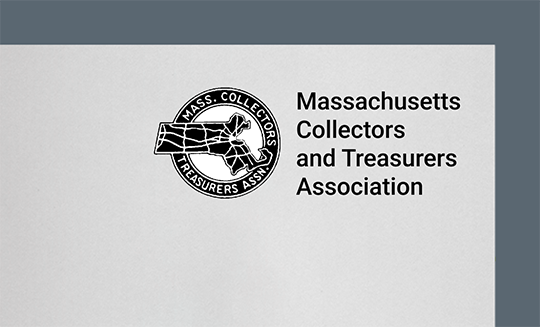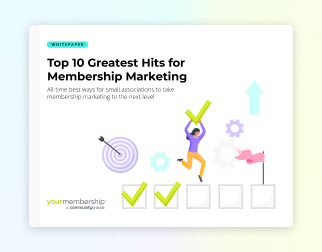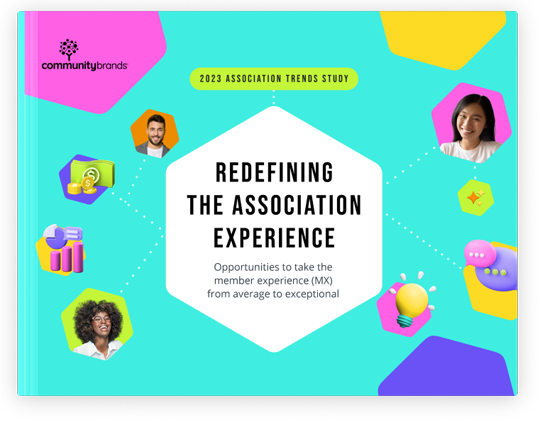Organizations facing disruption and the need for innovation are binary in their thinking. They consider 2 options: Either radically change or face peril. Rarely do the efforts work to successfully innovate, because organizations aren’t typically structured to adapt to major change. So, bringing in radical innovation more often fails.
That’s what we’re learning by reading “The Power of Little Ideas” by David Robertson, and this blog article is a continuation from our last post which highlighted the LEGO story from the book. We think the author’s perspective resonates in our professional education space, so we’re sharing what we’re learning.
The Gatorade story.
Here’s a tale of a storied brand which fell on tough times from intense competition and poor sales. If you read between the lines, you will learn about similar themes many of us face in our industries and the specialties of professional education.
In his book, Robertson highlights the challenges Gatorade’s new CEO at the time—Sarah Robb O’Hagan—endured, but overcame, while climbing out of a major company slump after decades of success.
Scenario: A great brand in pain.
Let’s step back into 2007, when Gatorade dealt with declining sales, while Powerade—its archrival—reported sales which increased by 13 percent. Before then, Gatorade grew into prominence for many years, established as a premium sports drink since the 1960s. The cherished brand then faced a big competitor, who was clearly taking away market share from Gatorade despite innovative efforts.
In 2001, when PepsiCo acquired Gatorade, the sports-drink maker started breaking away from its roots. Gatorade used the new-found resources from Pepsi to increase market distinction using new distribution channels and new versions of its drinks with lower calories and different flavors. These efforts didn’t work. And, Robb O’Hagan faced a formidable challenge.
First response: Adjust.
Robb O’Hagan’s first endeavor was to rebrand and update the image of Gatorade. Her team simplified the logo to the letter “G” and oversaw a redesign of its branding and packaging. The response from the consumer and financial markets was negative. People were either confused or thought the rebranding competed with a classic legacy. A big (expensive) Super Bowl commercial intended for a splash, instead failed. Curiously, Gatorade wasn’t even mentioned in its multimillion-dollar ad.
Second attempt: Trust the data & go back to the roots.
Sure, the rebrand didn’t work, and Robb O’Hagan’s predecessors’ efforts to increase market share by diversifying distribution channels, flavors and varieties also failed. However, these attempts generated market data, and Robb O’Hagan’s team listened to it. The result: They realized who their market is.
Solution: Remembering the real customer.
Using the data, Robb O’Hagan’s team gathered it ignored Gatorade’s core market: Athletes—as novel as it seems. And, specifically, two groups among these athletes were core: 1) Those younger athletes getting into sports and trying to formalize training, and 2) serious athletes who needed the drinks as part of a disciplined regimen and replenishment.
So, instead of radically changing formulas or creating new drinks, Gatorade pursued smaller, incremental additions which complemented its famous drink line. Specifically, a complete cycle of pre-, during and post-exercise/activity drinks and supplements, while also refocusing efforts to sell at retail locations and channels where these athletes frequented.
Radical, huh? They went back to their roots!
Results & follow up.
Gatorade stopped creating variations (flavors and calories), and instead used its understanding of the market to raise prices to reflect the value the drink offered. Ultimately, in 2015, sales became healthy and Gatorade finally regained the share previously lost to Powerade.
Actions created cumulative effects, not one big splash.
In summary, Gatorade’s team succeeded in a turnaround. However, this didn’t happen overnight.
Gatorade analyzed market data and scientific studies, and learned key factors to raise the company. And, it changed marketing tactics to connect with its audience. Gatorade learned to work with adolescent athletes and coaches to deliver its message. Gatorade then sponsored middle and high school sports tournaments to introduce its sports drink early in an amateur athlete’s sports career.
What Gatorade did wrong in the face of challenge:
- Increased distribution channels, markets and products. Ultimately, this flooded the market at higher operational expenses and complexity, decreasing sales and margins.
- Confused customers. Its new branded products mixed on retail shelves with old branding, confusing retailers and consumers.
- Approached retail incorrectly. Gatorade distributed its drinks through grocery, convenience and big discount stores. It wasn’t focusing on where their audience really visited, such as runners’ stores, cycling shops and other specialized sports retailers.
What Gatorade did right after the failures of radical change:
- Relied on scientific roots. Gatorade got back to its roots and regained an understanding about its audience. It analyzed incoming market data, which revealed who it lost. The drink, initially founded by researchers and scientists at the University of Florida, bet its future success on a research-based approach. (What an interesting twist.)
- More than a drink. Serving core customers meant looking beyond their hydration needs. Gatorade needed to look at how to get consumers committed to the drink, to dedicate to the idea of Gatorade. To that end, Robb O’Hagan devised Sports Fuel. This made Gatorade a full-blown athletic brand, which added creative new products around traditional drinks. It launched energy gels and bars, protein smoothies and shakes for different parts of the athletic experience.
Small change saved Gatorade.
Focusing on its core customer, and its claim to fame (the drinks), Gatorade built on its foundation complementary services and realigned its marketing to reconnect with its audience. Clearly, none of this involved radical change or disruption.
Key takeaways for associations & organizations.
Here’s what professional educators at associations can learn from Gatorade’s story:
- Go back to your roots, your mission. What is your mission, and how did you start? Go back to the early days to remind you of the intent of and initial audience for your programs. Rate yourself. Are you meeting this mission now? And, if no, what’s the gap? That’s the target to attack with incremental innovation.
- Don’t need radical change. We work with many organizations facing major shifts and forces impacting their education programs and overall operations. As you can see with Gatorade, taking radical action doesn’t bode well, and, in fact, Robertson claims the success rates are low: 60 percent to 75 percent of most programs fail when rolling out radical change.
- You may already have the product. Always seeking the next big thing, you may already offer a product or service at your organization, but it needs a refocus and/or complementary services around it to enhance it. Examples may include:
- A certificate program lacking new content, but still has market interest.
- A preparatory study program which needs new formats to support learners using different devices or coming from other parts of the world.
- A series of lecture content which needs coupling with more modern formats to strengthen the messaging and learning objectives.
From a professional educator’s view, we draw parallels to the story of Gatorade with our own challenges to innovate during a turbulent market. Nowadays, you can simply swap out any organization to experience similar challenges. We hope by sharing this case study it helps you and your organization make better decisions when it comes to professional development and learning and leverage some of the awesome brands you represent.







